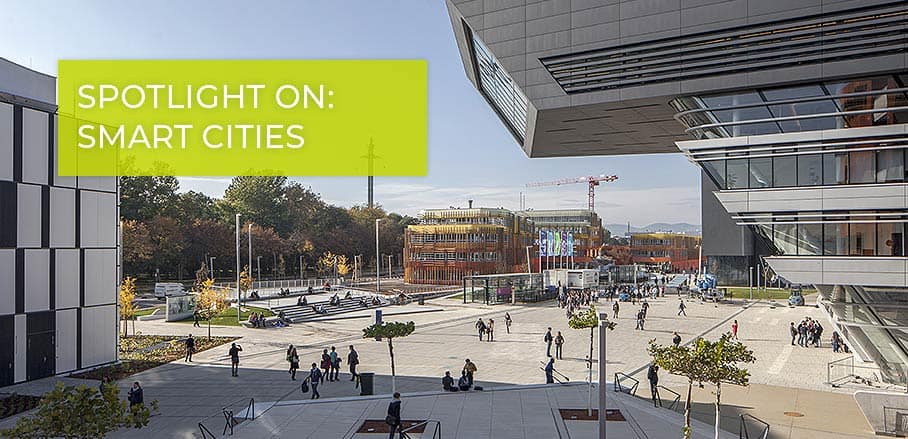Me, Them, and URBAN MENUS
Emphasising the importance of citizen participation in urban planning, architect Laura Spinadel presents URBAN MENUS: a tool for smart urban design that allows all stakeholders to include their vision of a city into the planning process.
My experience, as an architect and urban planner, as well as jury of urban projects tells me that, with the exception of square footage, no investor has an idea of the type of city he or she wishes to obtain with a project. Decisions are made using spreadsheets, and no thought is given to the city fragment or the human beings who could build their future in an interactive way there.
Impact through smart urban planning is needed now and we as society can deliver it.
Making Dreams Visible
“We’re running out of time!” is the present tenor when it comes to shaping our future. Against this, we want to contribute to a positive attitude and strengthen the faith by showing what can be done even in short time with the right tool at hand.
“Five minutes would be enough to dream an entire life, that is how relative time is.” (Mario Benedetti): all we have to do is to make dreams visible efficiently. No matter how big the challenges and how diverse human’s and nature’s needs are, we believe we can still create habitats where everyone is doing well – all creatures and the planet as a whole – if we respect individual dreams, analyse them, and merge them based on predictable long-term impacts and consensus.
A Starting Point
In order to design and realise the new campus of the Vienna University of Economics and Business, I performed in a total of eight roles. Looking back at the project, I realised that the most important role for this success story was probably that of the networker. I am convinced that the consensus-building necessary for the accomplishment of urban miracles can be achieved only with the right alliances. Joint work processes are commonplace in the field of spatial planning and I hope that they will be easier to master for the entire productive system in the future – and more so in exchange with the stakeholder group of citizens.
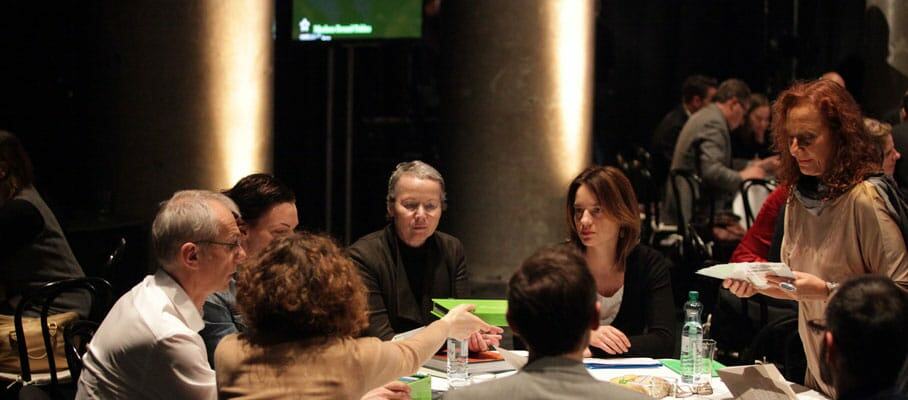
UrbanMenus think tank © BOAnet.at
Out of this desire, the URBAN MENUS emerged: a 3D instrument with which various stakeholders that can develop and analyse urban planning visions in a participatory way. This is especially useful in the critical phase of the preliminary planning, where it is, first of all, a matter of uniting divergent requirements of potential room users and creating foundations for future detailed planning, which are signed by all.
URBAN MENUS – A Software for Participatory and Impact-Oriented Urban Planning
We’ve developed a web-based 3D software and supplementary training programme for participatory and impact-oriented urban planning: URBAN MENUS. The tool – suitable for specialists and planning stakeholders as well as people without specific scientific background – allows creating visions of urban spaces based on individual dreams that can be
- quickly adapted to different needs,
- compared,
- wandered through, and
- evaluated in terms of resources and ecology, society and urbanity as well as economic efficiency; and in reference to the Sustainable Development Goals (SDGs).
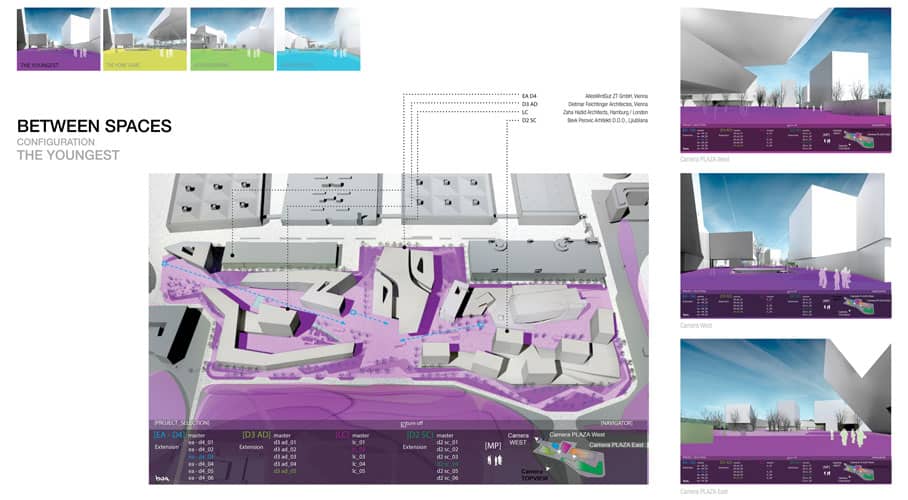
Configuratur UrbanMenus © BOAnet.at
“Temporary openings allow us to optimise the future before we live it, understand our life, and create an individual and collective balance” (Jean Pierre Garnier Malet): before real investments are made, risks, challenges and opportunities can be identified with URBAN MENUS and a consensus can be reached between those involved in planning and construction and the future users/inhabitants.
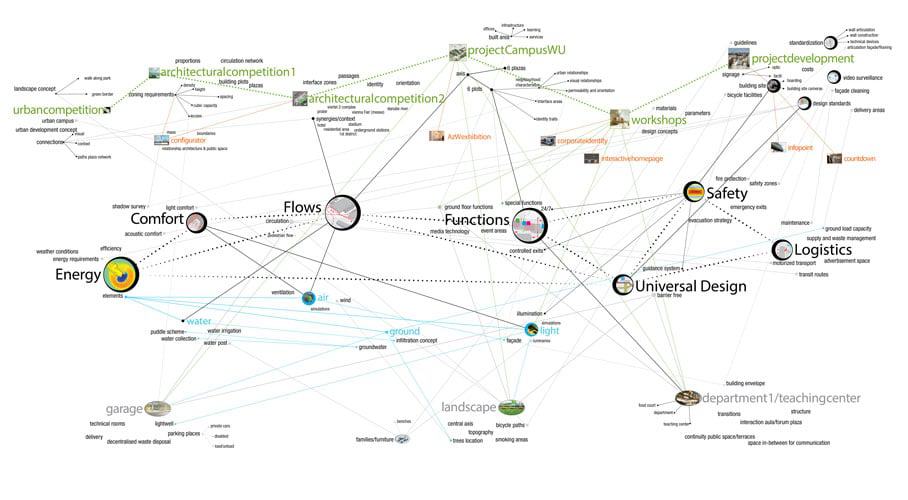
Process UrbanMenus © BOAnet.at
URBAN MENUS have multiple fields of action when finding consensus.
An example of support is the Street Menus Vienna project that made it possible, together with the City of Vienna (2016-7), to develop new paradigms of mobility in the streets. A case of training is the work done with teachers at the 2018 Venice Biennale in the frame of the BINK’s initiative for the education of young people regarding the use of public space. In the area of consulting, it is worth highlighting the role of the tool in the development of the master plan for the recovery of the Danube bank in the Sports and Leisure Mile project in the city of Krems (2018-9).
It is essential to point out that URBAN MENUS, as a collection of instruments of inclusive interaction, have not emerged in the laboratory but were conceived based on the work carried out for the new University of Economics and Business in Vienna. In this project, a holistic inclusion of all interests and actors from the beginning of the process, the possibility of empowering stakeholders involved, and the accompaniment with ongoing evaluations of the process undoubtedly fostered the resounding success of the Campus WU. This balance between high-end architecture, ecology, and the resulting investment costs make this origin of URBAN MENUS the best presentation card of a broad cooperation implementation.
Areas of Interaction
URBAN MENUS help evaluate the fundamental impacts that space planification has on the public sphere. In this regard, we distinguish three main areas where Urban Menus interact:
- Ecology as a cultural accomplishment
- Urbanity as a socio-political system
- Density as an economic component
Each one of these areas lays out its components, which in turn, and through their combination, define one of the million ways in which an urban fragment can be modelled. Either through an individual or a collective lens, URBAN MENUS allows us to visualise as many futures as we desire, as well as the possibility of modifying these components as many times as needed. The goal is to find a balance that can create a space in which the largest number possible of people like to live, work, learn, play, and spend their time.
There are five main topics – happiness, safety, innovation, profitability, circularity – as well as core indicators to represent them. The values of each core indicator on the ground are calculated and compared to the community’s goals. The outcome can either be a surplus or a deficit of goals. In sum, this means the degree in which these goals (agreed upon by science, industry, politics, or ultimately, by “society”) support and interact with each other.
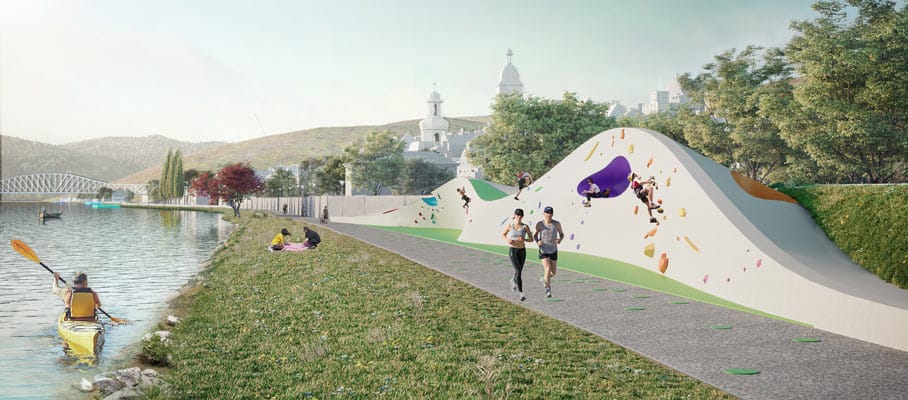
UrbanMenus workflow example © BOAnet.at
To derive an assessment result, to find a compromise between urban planning objectives, which are influenced by all disciplines and worldviews, more than hundred detailed parameters are taken into account, each well in line with the EU Green Deal, the SDGs, and a commitment to consider diversity and gender aspects.
It is a playful tool that significantly simplifies district planning thanks to its 3D virtual reality functionality, its visualization of urban interventions and its parametric effect. URBAN MENUS allow creating visions of city fragments based on individual dreams yet useful for all involved that can be evaluated in terms of eco-systems, social-context and resources-revenue.
Share your idea and wait for the magic: URBAN MENUS – Together we can make it happen.
- Me, Them, and URBAN MENUS - 10. November 2020
